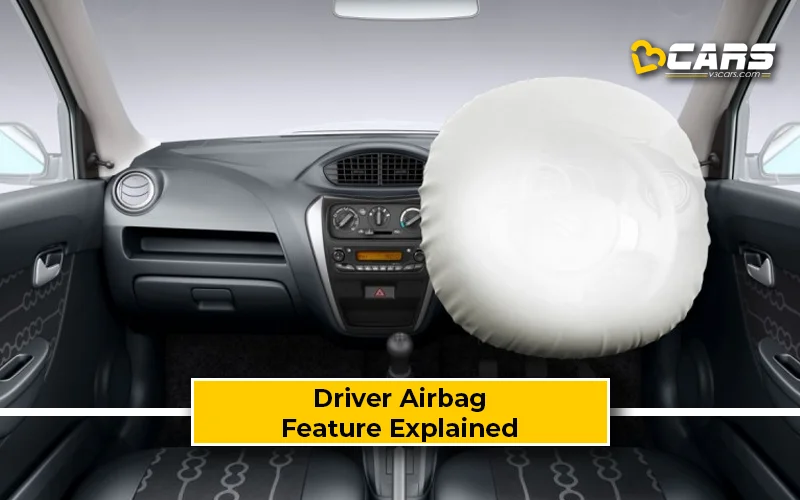Driver Airbag – Feature Explained
The driver airbag is a crucial component of a car’s safety system, designed to protect the driver in the event of a frontal collision. It works in conjunction with the seatbelt to minimise injuries and save lives. Let’s take a closer look at how this essential safety feature works.

What Is A Driver Airbag?
The driver airbag, or driver front airbag, is a flexible fabric bag that is stored in the steering wheel hub. In the event of a front-end collision, it rapidly inflates to form a cushion between the driver and the steering wheel, dashboard, and windshield.
How Does A Driver Airbag Work?
- Sensors Detect Impact: When a frontal collision occurs, sensors located in the front of the car detect the sudden deceleration.
- Signal To Inflator: These sensors send an electrical signal to the airbag inflator.
- Rapid Inflation: The inflator contains a chemical propellant (typically sodium azide) that, when ignited, produces a large amount of gas (nitrogen or argon) in milliseconds. This gas rapidly fills the airbag.
- Cushioning Effect: The inflated airbag provides a soft cushion, absorbing the driver’s forward momentum and distributing the impact force across the body. This prevents the driver’s head and chest from hitting the hard surfaces of the steering wheel and dashboard.
- Deflation: The airbag has small vents that allow the gas to escape quickly after inflation. This deflation is essential as it allows the driver to regain visibility and move, preventing potential suffocation or further injury.
Why Is A Driver Front Airbag Important?
- Reduces Head and Chest Injuries: The driver front airbag significantly decreases the risk of serious head and chest injuries, which are common in frontal collisions.
- Works With Seatbelts: Airbags are designed to work in conjunction with seatbelts. The seatbelt restrains the body from being flung forward, while the airbag provides additional cushioning for the head and chest.
- Mandatory Safety Feature: Driver airbags are now a mandatory safety feature in India, highlighting their importance in saving lives.
What Are The Pros And Cons Of Driver Airbags?
Here are the pros, or advantages, of driver airbag:
- Highly effective in reducing injuries in frontal collisions.
- Significantly decreases the risk of fatal injuries.
- Provides cushioning for both the head and chest.
- Works in tandem with seatbelts for maximum protection.
Here are the cons, or disadvantages, of driver airbag:
- Only effective in frontal collisions.
- Can cause minor injuries like abrasions or burns upon deployment.
- Improper use, such as sitting too close to the steering wheel, can increase the risk of injury.
Is It Possible To Install Driver Airbag From The Aftermarket?
Installing a driver front airbag aftermarket is highly complex and generally not recommended. It involves significant modifications to the steering wheel, dashboard, and electrical system, and if not done correctly, can lead to malfunction or even cause harm.
What Is The Cost Of Replacing A Driver Airbag?
The cost of replacing a driver airbag can vary significantly depending on the car model, manufacturer, and the extent of damage. It typically includes the cost of the airbag module itself, the labour cost for installation, and potentially the replacement of other damaged components. On average, replacing a driver front airbag module can cost over Rs. 4,000, depending on the make and model.
Affordable Cars In India With Driver Airbags
Since April 1, 2021, all cars sold in India offer driver and front co-passenger airbags as standard. Recently, India’s largest carmaker – Maruti Suzuki – updated their affordable cars, such as the Alto K10, Eeco and Celerio, with 6 airbags as standard, in a bid to make their cars safer.
Note: Check your Car EMI with our - Car Loan EMI Calculator
You can use our Fuel Cost Calculator to see how much any petrol, diesel or CNG car will cost to run based on the latest fuel price in your city.


0 Comments